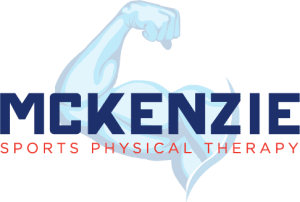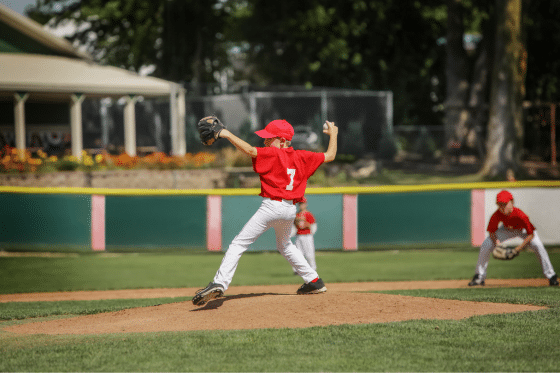Baseball is a sport that demands peak physical performance, with players often pushing their bodies to the limit. Whether you’re a pitcher throwing fastballs at high velocity or a hitter swinging for power, the preparation required to excel at the highest levels of baseball is intensive. Elite players need to not only maintain strength, speed, and agility, but they must also focus on injury prevention and recovery.
Physical therapy plays a critical role in the training and conditioning of elite baseball players. It goes beyond injury recovery and contributes to overall performance enhancement, ensuring that athletes are not only in top shape but also prepared for the unique demands of the sport.
At McKenzie Sports Physical Therapy, we believe that every athlete, whether professional or aspiring, can benefit from a comprehensive physical therapy regimen that addresses strength, flexibility, and injury prevention.
This blog will discuss how physical therapy supports elite baseball preparation, from injury prevention to maximizing performance and optimizing recovery.
The Demands of Elite Baseball
Before diving into the specifics of physical therapy, it’s important to understand the physical demands placed on a baseball player. The sport requires explosive power, long-lasting endurance, speed, flexibility, and precision. A baseball player’s body undergoes repetitive motions that are particularly stressful on the shoulder, elbow, hips, and knees. Whether it’s throwing, swinging, or running, each action involves a high degree of force and precision.
In addition to the mechanical challenges, baseball is a sport that emphasizes short bursts of explosive activity followed by periods of rest, creating an unpredictable pattern of muscle fatigue and recovery. Players need to be equipped with both strength and endurance to sustain peak performance over long seasons.
Given these challenges, a well-rounded physical preparation plan is essential for elite baseball players. This is where physical therapy comes into play, focusing on the development of strength, flexibility, and injury prevention strategies.
How Physical Therapy Supports Elite Baseball Preparation
1. Injury Prevention: Building a Resilient Body
Baseball players are vulnerable to various injuries, especially those related to the shoulder, elbow, and lower back. The repetitive nature of throwing, swinging, and sliding creates significant wear and tear on the body. One of the most important roles of physical therapy in elite baseball preparation is injury prevention.
Physical therapists assess each player’s mechanics, posture, and movement patterns to identify areas of weakness, imbalance, or stress. By identifying and correcting these issues early, therapists can help players reduce their risk of injury.
Prevention Strategies Include:
- Rotator Cuff Strengthening: Baseball players, particularly pitchers, place significant stress on their rotator cuff muscles. Physical therapists use targeted exercises to strengthen these muscles, enhancing stability and reducing the risk of shoulder injuries like rotator cuff tendinitis or tears.
- Flexibility and Mobility: Flexibility exercises improve range of motion, particularly in the shoulders, hips, and spine. Physical therapists guide players through dynamic stretching techniques, ensuring that their muscles and joints are ready for explosive actions.
- Core Stability: A strong core is essential for maintaining balance and power during pitching, swinging, and running. Physical therapy often focuses on core strength through exercises like planks, bridges, and rotational movements.
- Biomechanics and Movement Analysis: Physical therapists analyze players’ movement patterns during different baseball activities. This assessment helps identify any abnormal mechanics that could lead to injury, such as improper throwing or batting techniques.
2. Enhancing Strength and Power: Building Performance
Elite baseball players need to generate explosive power, especially in their upper body and lower body. Strength and conditioning play a major role in achieving optimal performance on the field. While many baseball players follow strength training programs in the gym, physical therapy goes beyond traditional workouts by focusing on functional strength and muscle imbalances.
Physical therapists work with athletes to enhance strength in specific muscle groups that are heavily used in baseball movements. Targeted strengthening helps players develop more power in their throws, hits, and sprints.
Key Areas of Focus for Performance Enhancement:
- Upper Body Power: For pitchers, having strong shoulders, arms, and forearms is essential to throwing with speed and accuracy. Batters need strong shoulders and wrists for power in their swings. Physical therapists design exercises to increase strength and explosive power in these areas.
- Lower Body Strength: The legs are crucial for generating speed and power in baseball. Physical therapy helps players develop strong legs and hips, which improve running speed, base stealing, and sprinting for fielding plays.
- Rotational Strength: Baseball players rely on rotational power during pitching, hitting, and throwing. Physical therapists often focus on exercises that build strength in the core and upper body to support these rotational movements. A stable core improves both hitting power and throwing velocity.
3. Flexibility and Mobility: Maintaining Agility
Flexibility is a critical aspect of any athlete’s training regimen, but in baseball, it plays an even more vital role. Whether you’re pitching from the mound, swinging for the fences, or diving for a catch, flexibility allows baseball players to execute their movements with precision and avoid muscle strain.
Physical therapists use a combination of dynamic and static stretches to enhance flexibility and improve range of motion. By increasing flexibility in key areas such as the shoulder, hip flexors, hamstrings, and spine, players can move more efficiently and with less risk of injury.
Benefits of Flexibility for Baseball Players:
- Improved Throwing Mechanics: Flexible shoulders and elbows allow for smoother throwing motions, increasing accuracy and reducing strain on the arm.
- Better Batting Stance and Swing: Flexibility in the spine, hips, and shoulders enables a more fluid and powerful swing, allowing batters to generate more force while reducing the risk of muscle strain.
- Enhanced Agility: Flexibility and mobility help players move swiftly and decisively on the field, whether it’s sprinting between bases or chasing down a fly ball.
4. Recovery and Rehabilitation: Returning to Play Stronger
Even the most well-conditioned players experience injuries or muscle fatigue over time. Physical therapy is a critical component of the rehabilitation process, helping athletes recover from injury and return to play at their best. After an injury, physical therapists use a combination of therapeutic modalities such as ice, heat, ultrasound, and electrical stimulation to promote healing.
As players return to competition after an injury, physical therapy also focuses on reconditioning the body, ensuring that athletes regain strength, mobility, and flexibility without risking further injury.
Rehabilitation Includes:
- Joint Mobilization: This technique helps restore range of motion to injured joints, especially in the shoulder, elbow, and knee.
- Soft Tissue Work: Manual therapy techniques, such as myofascial release and massage, are used to relax tight muscles and break down scar tissue.
- Functional Training: Once healing has progressed, physical therapists incorporate sport-specific movements into rehabilitation. These exercises prepare athletes for the movements and demands they will encounter on the field.
5. Mental Preparation: The Link Between Physical Health and Mental Strength
Physical therapy not only addresses the physical aspects of preparation but also plays a role in mental readiness. An athlete’s body is the foundation of their performance, and when the body is functioning at its best, the athlete feels more confident and mentally prepared.
By ensuring that athletes feel physically strong and prepared, physical therapy contributes to their mental well-being. When players are free from pain and injury, they can focus on improving their game without the distraction of discomfort or worry about injury.
Conclusion
In elite baseball preparation, physical therapy plays a pivotal role in ensuring that athletes stay healthy, perform at their highest level, and recover efficiently. Whether it’s enhancing strength, improving flexibility, preventing injuries, or rehabilitating after an injury, physical therapy supports baseball players in all aspects of their training and performance.
At McKenzie Sports Physical Therapy, we are dedicated to helping athletes maximize their potential by integrating comprehensive physical therapy programs into their training regimen.
If you’re an elite baseball player looking to elevate your game, reduce the risk of injury, or recover from a setback, contact us today at (267) 332-8102 or click here to book a free discovery visit and take the next step in your athletic journey.


